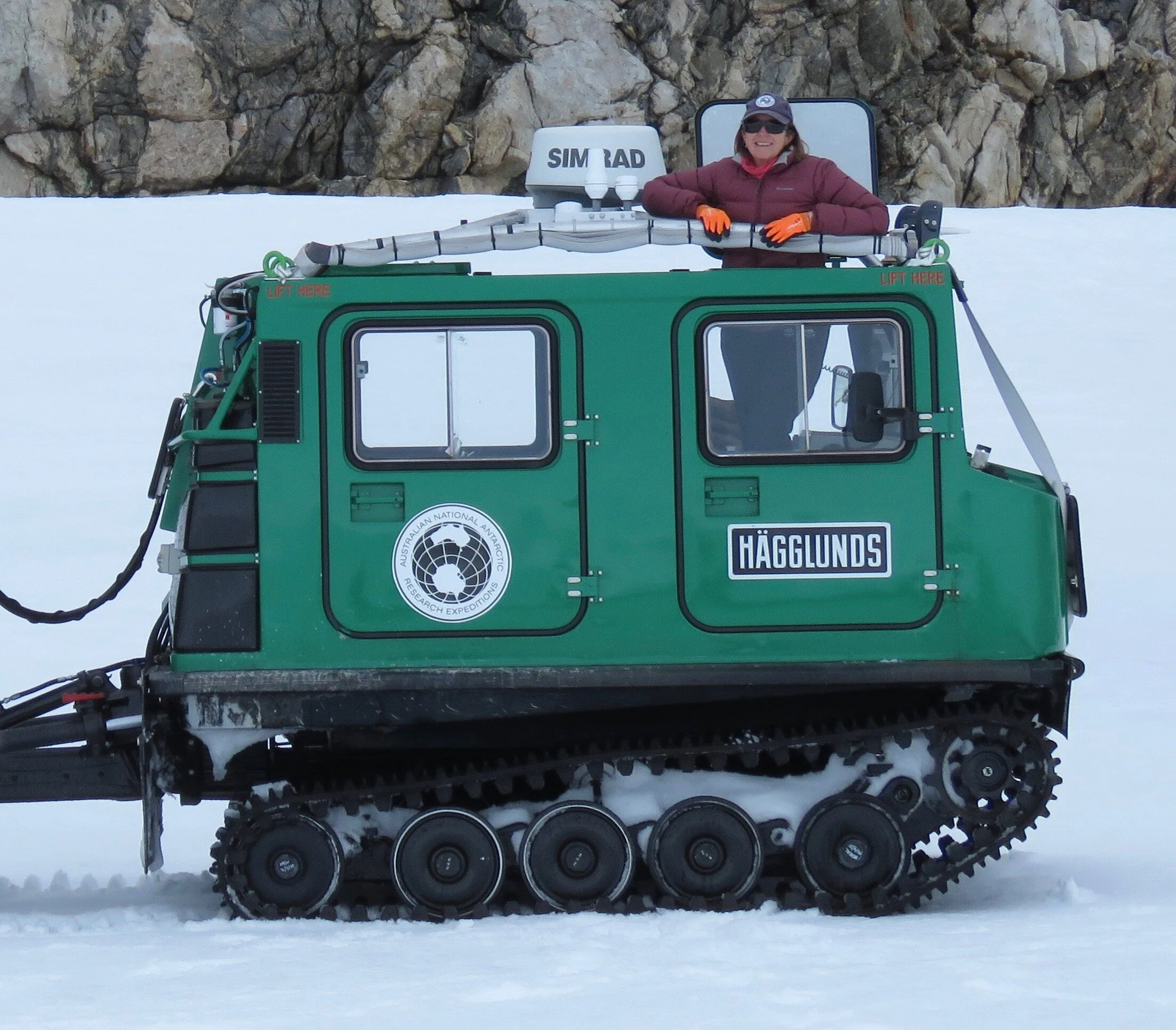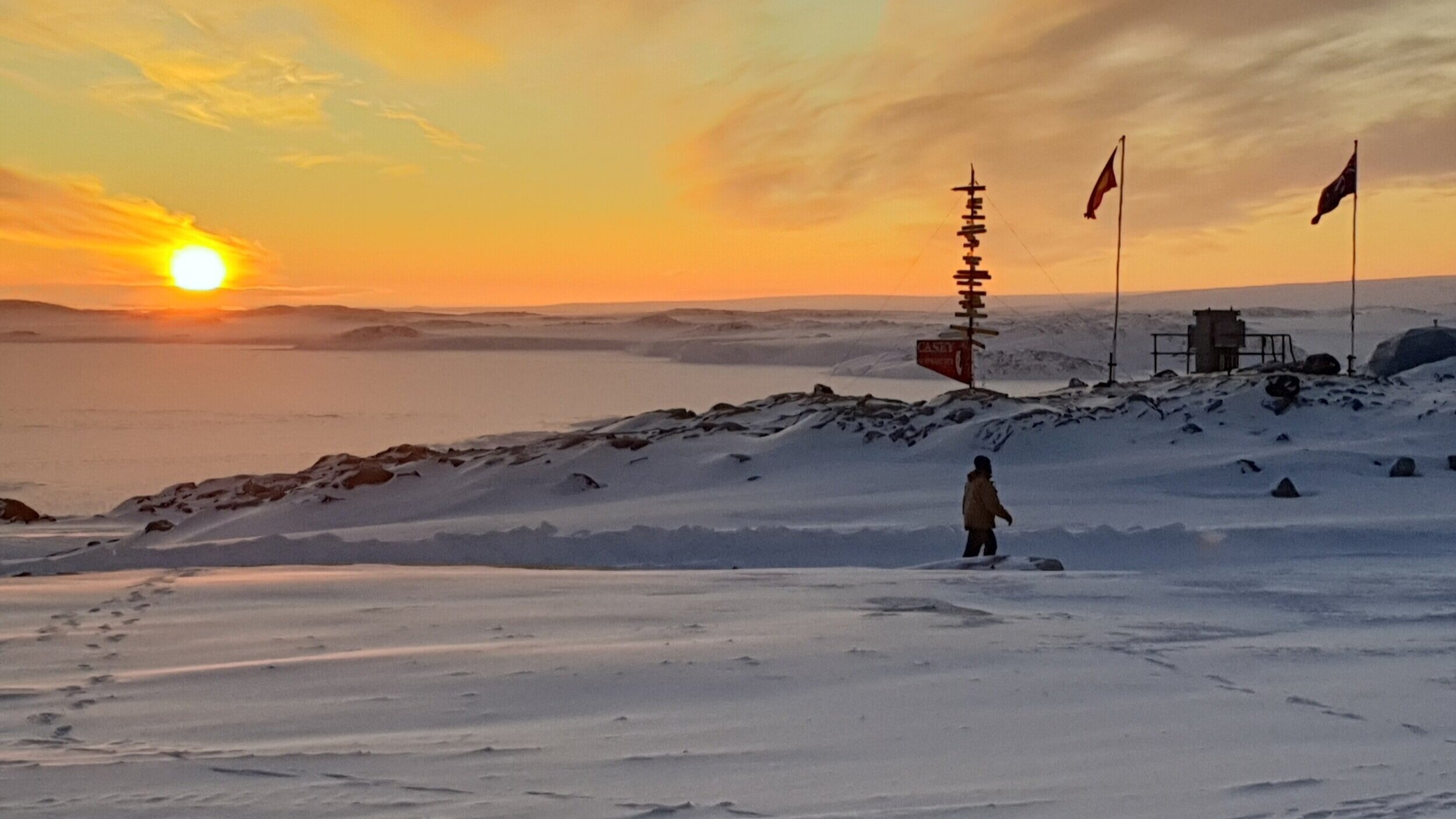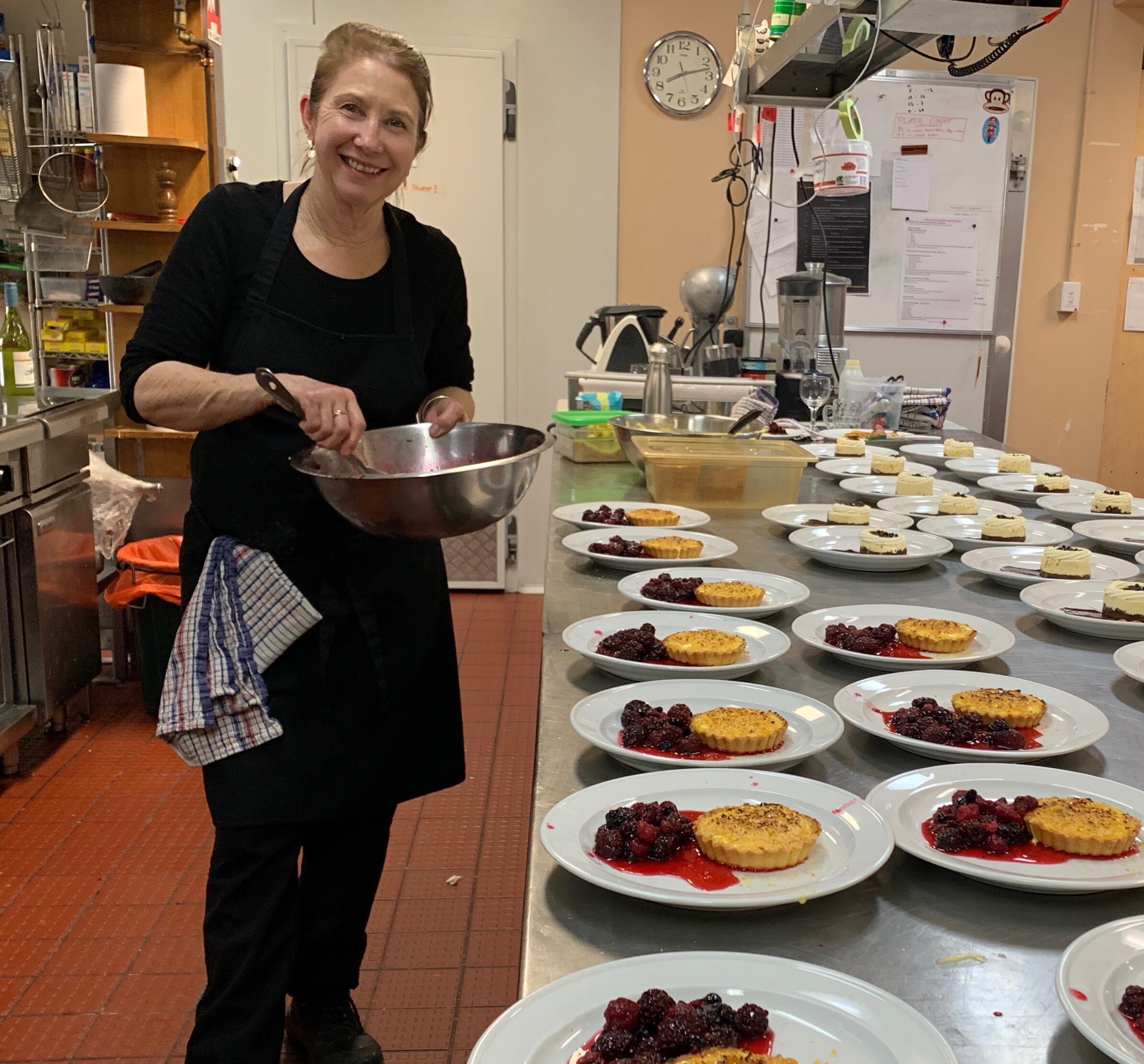PART 3: Frontier chefs
Annette Fear’s offshore odyssey, from Macquarie Island to Casey station
Continuing our look at chefs working in remote locations – this issue we talk to Annette Fear who has spent two working ‘seasons’ with the Australian Antarctic Division, the first at UNESCO world heritage site Macquarie Island about halfway between Australia and Antarctica, and the second at Casey research station. Annette describes her time at Macquarie Island as one of the highlights of her entire life, and she’s clearly also enjoying her time at Casey.
Once visited, never forgotten
ANNETTE FEAR - CHEF, CASEY STATION, AnTARTICA
“It’s such an extraordinary place,” Annette notes of Macquarie – the only island on Earth composed entirely of oceanic crust and rocks from the planet’s mantle, deep below the surface. “It’s pretty wild and windy – it has about 300 days a year where it’s either raining, sleeting, hailing or snowing. When it does get snow, it doesn’t stay on the ground very long because it’s a marine climate, and it’s not white, it’s green. And there’s hundreds of thousands of penguins and elephant seals, you’re just surrounded by them.
“I’ve always loved being outdoors and had an appreciation for nature, I’ve always felt very environmentally aware, so I felt extremely privileged being able to spend a year surrounded by so much wildlife. You can go out hiking on your own all year round, and you can stay in huts overnight, so it’s pretty special”
The research station on Macquarie Island is a long-established one. “It’s a collection of buildings that almost looks like an old ranch – wooden buildings and semicircular huts, some of which date back to the 1950s,” Annette tells us, “although a rebuild’s in the planning stages. And it’s built on an isthmus so you’re surrounded on all sides by ocean, which is quite an experience. Where I am now in Casey station, there are Adelie penguin colonies, leopard seals and so on, but you’re not literally tripping over them like you are on Macquarie Island.”
Annette came to work for the Australian Antarctic Division after hearing one of the station leaders on ABC radio one afternoon. “I’d spent about 20 years working for a family-run restaurant and cooking school just outside of Noosa on the Sunshine Coast and I felt I needed a change, but because I’d had an amazing job for so long I wasn’t about to leave it unless it was for something equally as interesting. And I was driving home from work and one of the section leaders was being interviewed about work opportunities, so I thought ‘I’ll see if they’re hiring chefs’. I went home and looked online and they were, so here I am!”
Sunrise at Casey station © Bill Santalab 2020
Wintering at Casey
After her first stint at Macquarie Island, she’s currently ensconced at Casey station for a ‘winter’ season – “you either do summer, which is 4-5 months, or winter, which is a whole year.
“The time of year you start varies according to the station – Casey is usually the first to be staffed, and I’ve been here since the beginning of November. I love it – my ‘happy place’ has always been in the kitchen, my partner says I’m at my best when I’m planning a menu or a trip somewhere.
“You’re your own boss here - you’re catering to a particular market in that you’re preparing a kind of homestyle food, but just because you’re cooking like that doesn’t mean you compromise the integrity of what you’re producing - you still have to care about what you’re cooking. Whether you’re doing fine dining or a steak in mash, it’s still all about the food.”
CHef ANNETTE FEAR PREPARES IN THE KITCHEN
As Noel Tennant of the Australian Antarctic Division explained in last issue’s interview, fresh produce at the research stations is necessarily limited, especially with regard to soft fruits and leafy green vegetables, but Annette says that doesn’t impact the kitchen staff very much: “If it’s not available fresh we’ll have it frozen. In fact we have an amazing variety of ingredients to work with. The variety of what you produce as the chef is really up to you, and I like to mix it up for my own enjoyment. I’m always looking at recipes online for inspiration but sometimes I might just decide to do a roast – ironically the simplest things are usually among the best received. Steak and chips is always really popular!
“On Saturday night I did an Indian meal and tonight I’m doing some Chinese, then tomorrow
I might do something Spanish, plus pasta for lunch.”
“There’s also special occasions where you can showcase your culinary skills. If I want to do an eight course degustation menu for winter I can, if the station crew’s into that sort of thing.”
And while working and living in close quarters won’t suit everyone, it’s clearly something Annette has no problems with. “I think it’s fantastic because it gives me an opportunity to get to know my fellow expeditioners down here. We have what’s referred to as a slushie system, an old army term, which means everyone in the base is rostered to do kitchen duty on a once a month rotation – they’ll come in and work as a kitchenhand. That means as the chef I get to know everyone on a one on one basis. If that wasn’t the case I might find the contact somewhat superficial, but as it’s a great system I find I really enjoy that side of things.”
Relaxing in the Casey mess © Nisha Harris 2019
‘I couldn’t recommend it enough’
As Casey is a highly trades-oriented station staffed primarily by mechanics, machinery operators and technical people, Annette acknowledges there aren’t many women on base. Macquarie Island, however, is a different story – “They had parity between male and female staff the year I was there; it’s quite a small station so it doesn’t attract a big trade team, and a lot of the rangers and scientists that go down there are female.”
Speaking more generally, Annette says that many of the chefs, doctors, field training officers and observers for the Bureau of Meteorology who work in Antarctica are women. And while acknowledging that working in such a remote location is not for everyone, she explains: “when you first apply, you go through quite a complex selection process which includes psychological testing. You’re put with a group of about 2000 and over a two day period you’re given multiple scenarios which cover all the things you might have to deal with down here – from general workplace concerns to health and environmental issues, so a lot of problem-solving.
“So you do feel quite privileged when you make it through that process – and once you’ve done a successful year, you then go into a pool from which you can reapply without having to go through the whole selection criteria again. ”
“Sometimes people go through all that and then decide once they’re here it’s not for them – but on Casey, once the runway closes down you’re stuck here, and it’s the same on Macquarie Island. Once that ship sails away, you’re not leaving!
“I personally couldn’t recommend it enough for someone looking to do something different. The kitchens are fantastic with really good top quality equipment. I think if anyone wants to do something in their career that takes them outside their comfort zone and gives them a challenge, this is it. And I think it’s a privilege too, to come down and do something like this. Plus it’s better paid than what chefs usually earn so it’s also quite financially rewarding.”
Expeditioner exits the hydroponics hut at Mawson © Mark Horstman 2019
Annette says she won’t be applying for another full winter season – “I have too many family things happening back home, with grandchildren, a longterm partner and my mother in her mid-eighties” – but adds, “If it was just me I would put my hand up, because I really love it. And I’d certainly put my hand up for another summer.”
Always new opportunities for applicants
Those interested in applying should visit the AAD website at https://jobs.antarctica.gov.au










